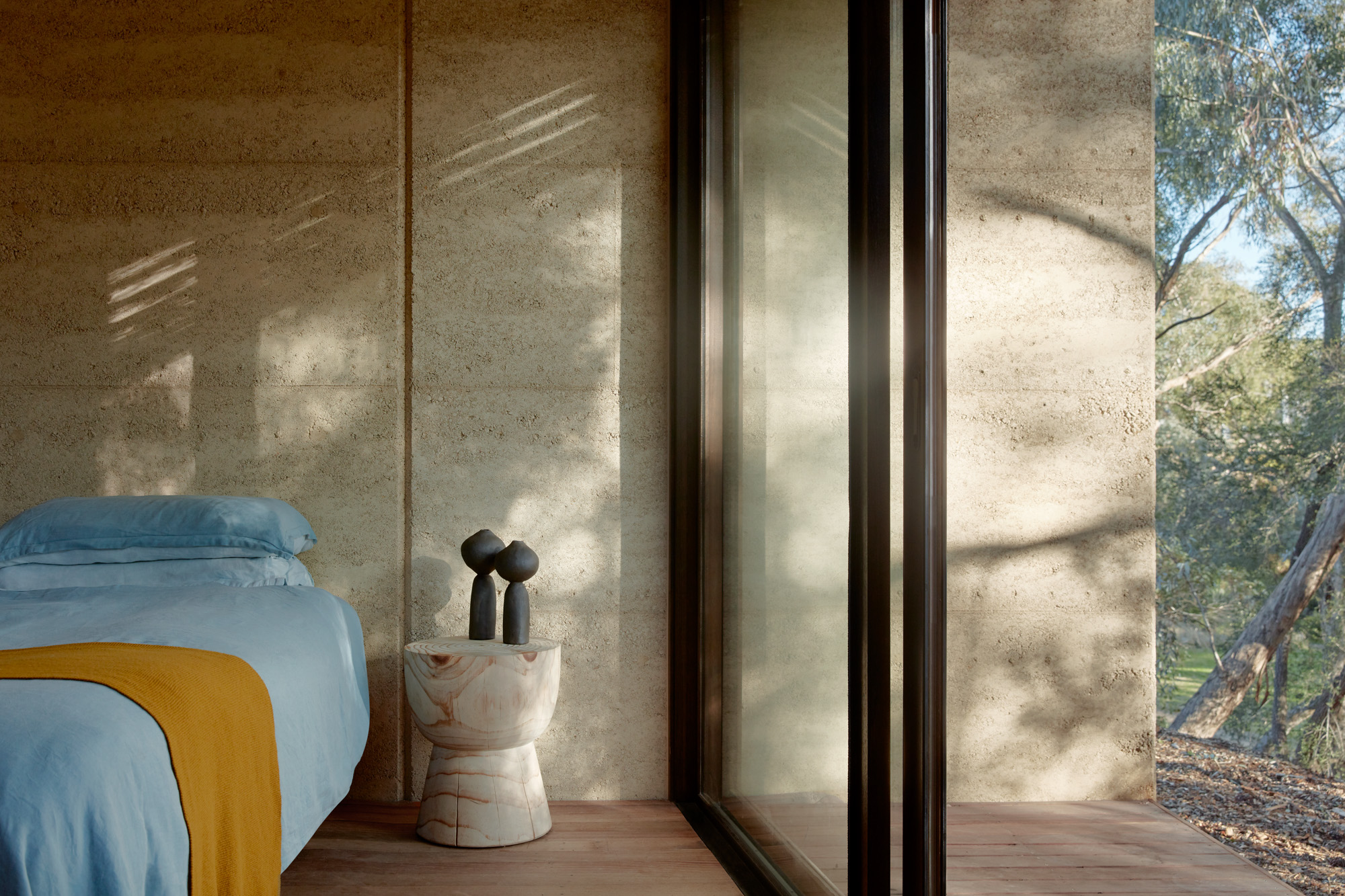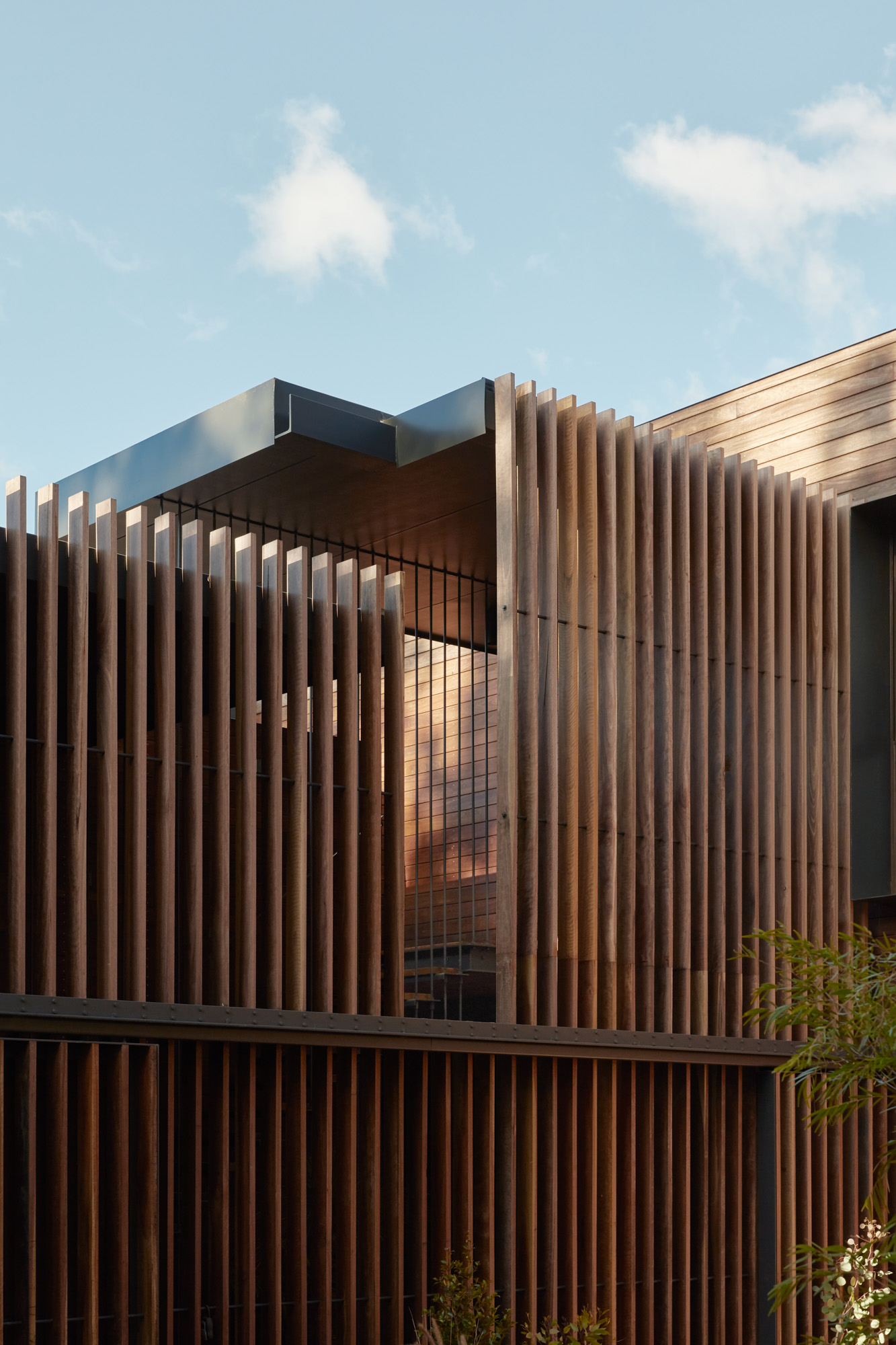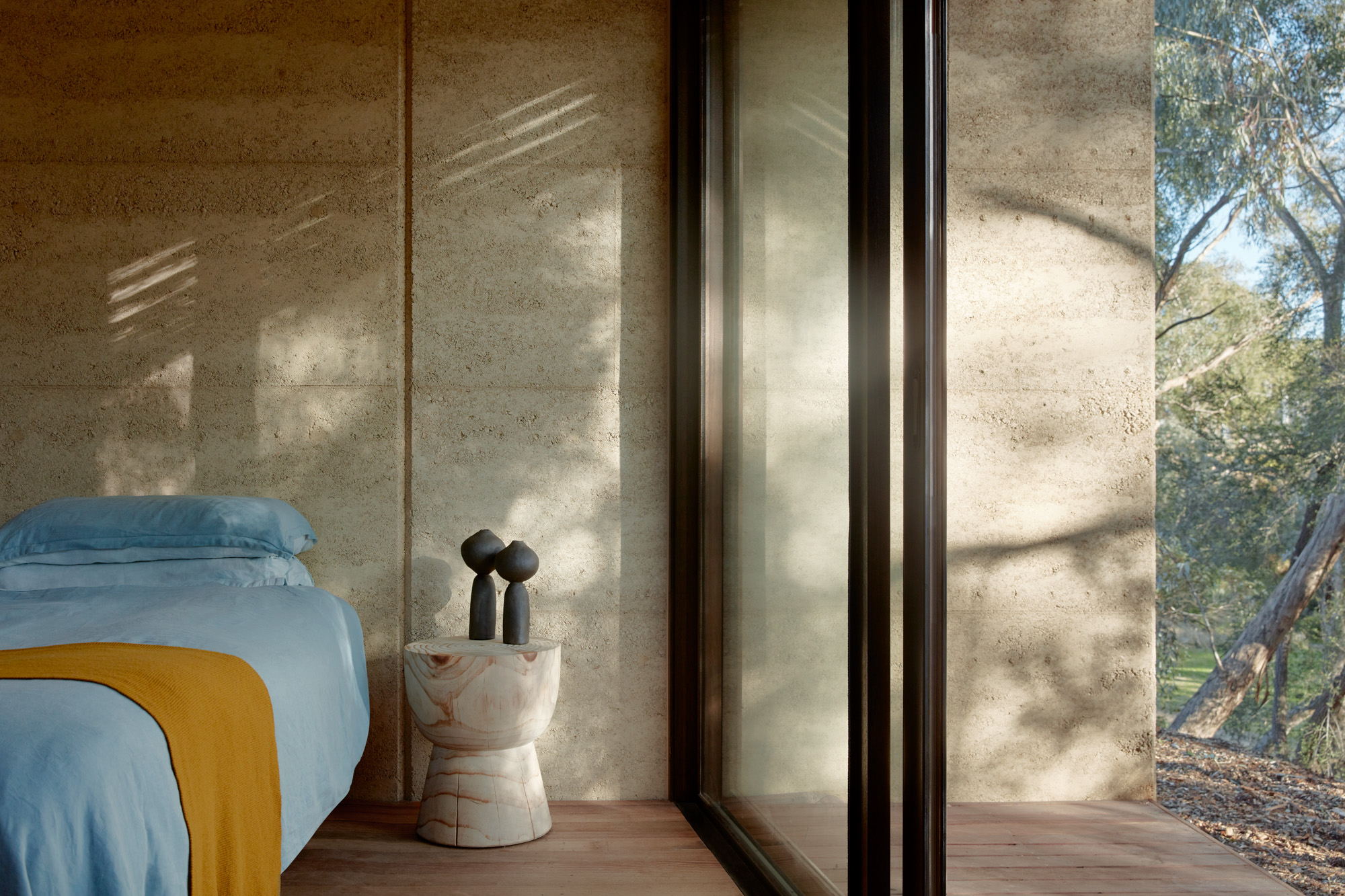
 |
 |
 |
지속 가능성을 고려한 멋진 집, Edgars Creek House의 비밀
프로젝트 소개
Breathe Architecture의 Edgars Creek House는 도시 속에서 잃어버린 땅, 사람, 건물이 어떻게 다시 연결될 수 있는지를 보여주는 드문 예시이다. 이 집은 자연의 본질적인 특성과의 재연결을 제공하는 디자인을 갖추고 있다.
주택의 위치와 자연환경
이 집은 멜버른 북부 코부르크 노스의 에드가스 크릭 기슭에 위치하고 있으며, 주변에는 아름다운 사암 절벽과 철나무 숲이 있다. 이 도심 속에서 찾기 힘든 자연 풍경에서 영감을 받아 설계되었다.
건축가의 비전과 클라이언트의 요구
프로젝트 건축가 마델린 수얼은 이 집이 자연과 조화를 이루며 살아가는 방식을 제공한다고 말한다. 클라이언트는 "자연 속에 단순하게 자리 잡은 거처"를 원했고, 이 비전에 건축가들도 깊이 공감하여 프로젝트에 참여하게 되었다.
디자인 철학
이 집은 자연과의 공존을 목표로 하여, 거주자가 자연의 아름다움과 조화를 더욱 깊이 느낄 수 있도록 설계되었다. 집은 원시적이고 기본적인 건축 요소들로 이루어져 있으며, 클라이언트가 삶의 모든 측면에서 지속 가능성을 중요시하는 우선순위를 반영했다.
설계 전략
경사진 부지에 맞추어 세 개의 파빌리온으로 나뉘어 있으며, 성숙한 고무나무들을 신중하게 보존했다. 부지의 자연적인 형태에 맞추어 집을 유기적으로 배치하여 환경과의 조화를 이루었다. 서쪽 방향으로 주요 전망을 열어주고, 자연 환기와 그늘을 제공하여 기계식 냉방 없이도 열적 쾌적성을 보장했다.
브리솔레이(brise soleil) 개념
브리솔레이는 집의 개방형 중심축으로 기능하며, 이 중심축을 따라 다른 공간들이 퍼져나가는 형태로 설계되었다.
세 개의 파빌리온 구성
세 개의 파빌리온은 각각 수면, 목욕, 생활 공간으로 나뉘어 있으며, 중정을 중심으로 주변 경관과 건축 형식이 교차하도록 배치되었다. 각 파빌리온은 전망과 크릭과 직접 연결되며, 이동할 때마다 사용자에게 자연과 날씨를 경험할 기회를 제공한다.
주거 경험
이 집에서 거주하는 것은 단순히 창문을 통해 자연을 보는 것뿐만 아니라, 촉각과 후각을 통해 자연을 직접 느끼며 생활하는 것을 의미한다.
결과
Edgars Creek House는 자연 속에 자리 잡은 단순하고 지속 가능한 거처로, 도시 속에서 잃어버린 자연과의 연결을 되찾아준다. 이 집은 거주자에게 자연과 더불어 살아가는 깊은 경험을 제공한다.
translate by ChatGPT


















A Reconnection with the Essential Qualities of a Landscape – Edgars Creek House by Breathe Architecture
In an urban context, connection between the land, people, and the buildings they inhabit is often lost. Edgars Creek House by Breathe Architecture is a rare example of a home whose design offers a reconnection with the essential qualities of a landscape almost entirely superseded by the encroaching built environment.
Perched on the banks of Edgars Creek, in the inner Melbourne suburb of Coburg North, the site overlooks sandstone cliffs and banks of native ironbark trees. Inspired by this rare pocket of bushland amongst the city, the house “is about the country and the landscape in which it exists,” says project architect Madeline Sewall. “It offers a way to live as part of that system rather than trying to preside over it.” The client’s vision for “raw and simple place to dwell, nestled into the landscape,” resonated with the architects, who, after visiting the site with the client and coming to understand his connection to the natural world, “knew this was a project we wanted to be a part of,” Madeline recalls.
The resulting home is primal and elemental – a building that, in coexisting with the natural environment, amplifies the experience of it, and supports the client’s prioritisation of sustainability in every aspect of his life. In response to the steeply sloping site, the house is broken down into three pavilions that step down along the contour of the land, carefully preserving the existing mature gum trees. “Rather than looking at how we could make the site fit around a house, we looked at how the house could fit organically into the site,” explains Madeline. The primary outlook over the creek is to the west, so the design sought to open the house to this direction while providing shading and ventilation to ensure thermal comfort without the need for mechanical cooling.
“This is where the idea of the brise soleil originated,” says Madeline. “The brise soleil became the open-air spine of the house which other spaces could branch off of.” From this spine, the three pavilions emanate – one for sleeping, one for bathing, one for living. Centred around a courtyard, the surrounding landscape and the built form layer and intersect, with the pavilions framing the view through a stand of tall ironbark trees to the west and onto the meandering creek beyond. Each pavilion is connected to the land, to the view, and to the creek. Circulation between each space offers the inhabitants the opportunity to interface with the site, the weather, and the landscape beyond. “Dwelling in this home means truly connecting with nature, not just through framed views but through touch, smell and feel,” Madeline says.
from thelocalproject